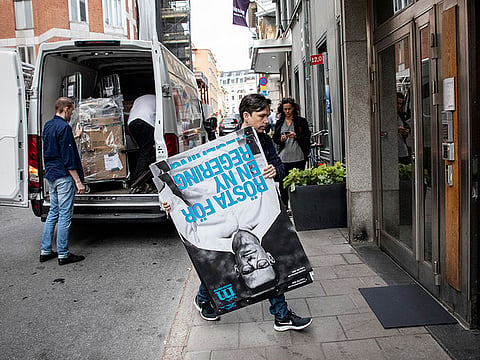Sweden braced for lengthy negotiations on new government
A guide to Sweden’s next government after inconclusive election

Sweden’s general election has produced a close and inconclusive result, with just 28,000 votes separating the two coalitions that have ruled the Nordics’ biggest economy in recent years.
Expect days — and possibly weeks — of negotiations on a new government after a surge by the nationalist Sweden Democrats, which has deprived both the Social Democrat-led coalition of Prime Minister Stefan Lofven and the opposition centre-right Alliance of a majority in parliament.
Given the uncertainties, here’s a guide to the possible government configurations that might assume office, based on near-final results that are subject to change as votes cast abroad and some other advance votes are counted:
Lofven II
Stefan Lofven has headed a minority centre-left government together with the Greens, backed by the Left Party. His Social Democrats have lost seats but remain parliament’s biggest party. The Green Party has suffered a dramatic setback, losing 10 seats, but that has in part been compensated by a better performance from the Left Party.
Should the weakened coalition still manage to form a government, expect a third attempt from the Social Democrats to introduce a tax on banks’ operations, as well as higher capital taxes for the richest Swedes. The Social Democrats have also vowed to introduce an extra week off for parents, raise spending on welfare and lower taxes on pensions.
Alliance Cabinet
Moderate Party leader Ulf Kristersson is the candidate for prime minister for the Alliance, the centre-right party bloc which has been opposition after ruling the country from 2006 to 2014. But the Alliance parties, which plan to form a minority government, can do so only if the Sweden Democrats don’t vote against them.
Should Kristersson and the Alliance succeed, income taxes will be lowered, spending on defence and police will be raised considerably, and they will aim to bring Sweden even closer to Nato.
Moderates Cabinet
The Alliance has been under some pressure due to contrasting views on the Sweden Democrats. The Liberals and the centre Party have said they are against forming a government should they need to rely on the help of the Sweden Democrats, meaning Kristersson may attempt to go it alone. For this scenario to work, he would need to rely on the external support of the nationalists, and would try to build majorities with different parties on different issues.
A Moderates-led government would be stricter on crime and immigration than an Alliance government. The party has also promised cuts in social benefits in order to make working more attractive.
Social Democrat-led Cabinet
If forming a minority government proves too difficult, Lofven might attempt to cobble together a broad coalition. The most likely candidates to join such a configuration are the Green Party, the centre Party and the Liberals, perhaps also supported by the Left Party.
Such a configuration would most likely be less strict on immigration and spend more on measures to protect the environment. On the fiscal front, it would have to find a way of reconciling the centre-right’s aim of lowering income tax and the left’s view that taxes on capital should be raised.
Grand Coalition
One of the least likely scenarios would see the two biggest mainstream parties get together in a German-style grand coalition. Both Lofven and Kristersson publicly ruled out this option ahead of Sunday’s vote, but the inconclusive result may eventually force them to think again.
In this case, expect a tightening of immigration policies and more spending on the police, defence and welfare.
What Next?
Lofven has vowed to remain in charge until parliament convenes, in two weeks’ time. He will have to face a confidence vote, and resign if a majority votes against him. In that scenario, the speaker will need to present a new potential prime minister and government, and a vote will be held in parliament.
Parties have a maximum of four attempts to form a government or face a new election within three months, although in the past parliament has always accepted the speaker’s first government proposal.
A new government, or a Lofven II-cabinet, will need to present a 2019 budget to parliament within three weeks of assuming office, November 15 at the latest. A budget vote will be held in December.
Sign up for the Daily Briefing
Get the latest news and updates straight to your inbox



